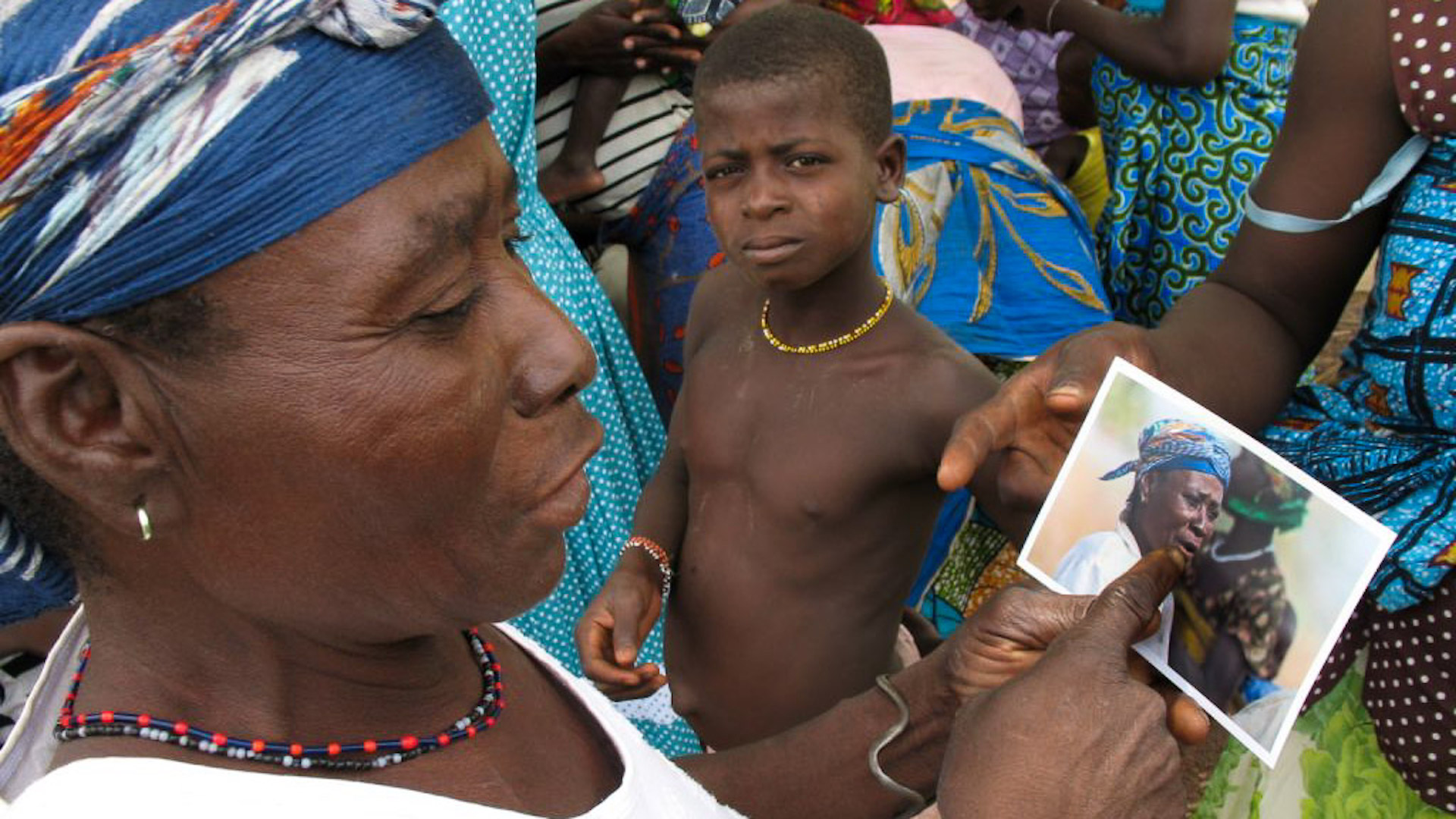
A decade ago, it took a lot of effort for me to share photos I had taken in West Africa with the people in the images. I would travel back to the US, print the photos, mail to them to someone traveling back to the region, and ask them to hand deliver the prints.
On the rare occasions when I managed to pull it off, it was very rewarding to hear how excited people were to receive their portraits. Sometimes it was the only photo a family would have of that individual.
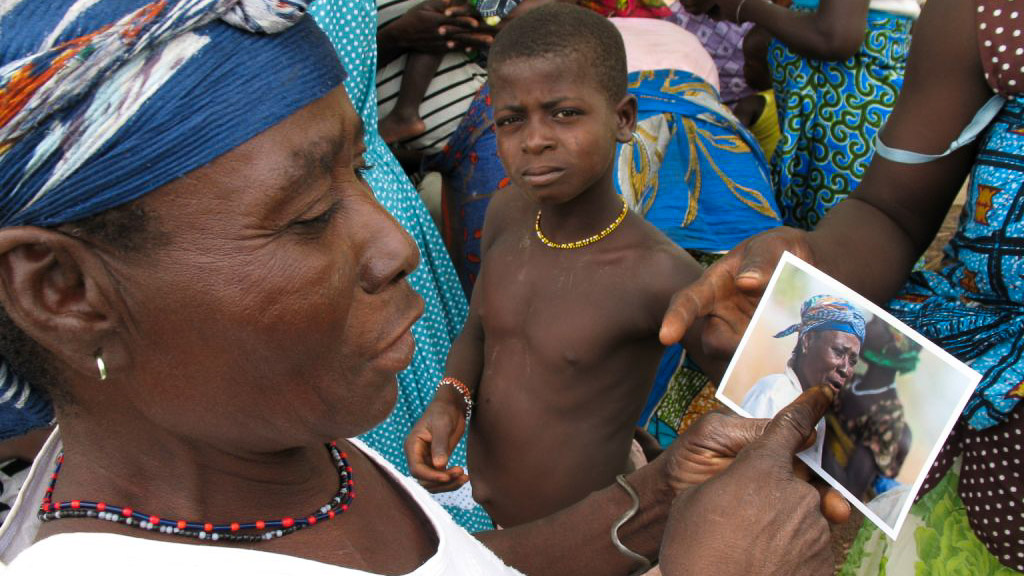
A woman in the Porungon village in northern Ghana looks at a print of her photo taken by William Haun. Volunteer Mark Coppola delivered the print to her six months after it was taken. Photo by Mark Coppola.
Those days are long gone as media is now shared instantly and spreads virally. Internet access and smartphones are now commonplace in even the most remote corners of Africa and other parts of the world. Africans are interacting digitally with people all over the planet.
Just like you, the student in the northern Ghanaian village is monitoring the number of likes her Instagram selfies are getting. The entrepreneur in Kenya is commenting alongside you on the same trending YouTube videos. The Zambian pastor is networking on Facebook with friends of your friends.
This dramatic change has made me increasingly conscious of the global reach of my images that are published online or even in print. In the past, most of the subjects of my images would never see them or know how they were used. Sometimes, this new global connectedness catches me by surprise.
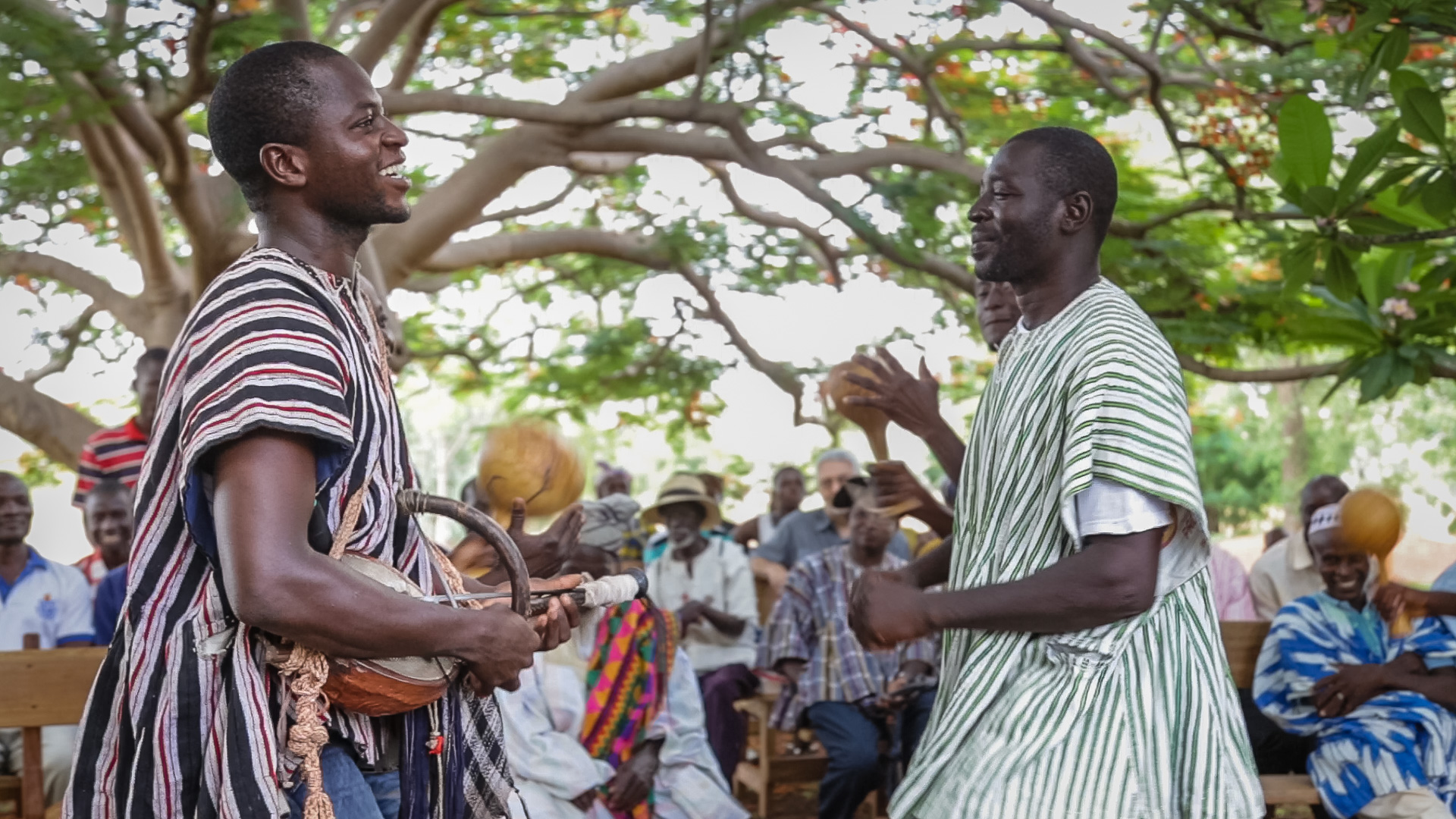
Baba plays his gongyi, a traditional one-stringed fiddle, at the naming ceremony for William and Heidi Haun’s daughter in June 2015. Video still by William Haun.
Baba, a traditional fiddler in my small Ghanaian town, stopped me in the street and insisted I show him his video. “What video?” “The one you sent to my cousin in New York City.” “I don’t know your cousin in NYC!”
After the initial confusion, I figured out that his cousin in the US had seen a video of my daughter’s traditional naming ceremony on YouTube, spotted Baba fiddling, and called him to tell him about it. Baba was very proud that his great performance had been recorded.
This awkward but, thankfully, celebratory discovery revealed that I can no longer post people’s images and assume they will never see them. This introduces a whole new level of accountability. In my opinion, that’s a good thing.
The Theology of . . . Photography?
As Christians, we need to be conscious of how we are depicting people from other cultures and social classes in our photos, videos, tweets, and status updates. What we share and publish needs to be not only truthful but respectful of the dignity of its human subject. After all, as ambassadors for Christ we are to exemplify the biblical worldview that lies behind the gospel we preach—that every person in this beautifully diverse world is created in the image of God and is offered his boundless love and grace.
“What we share and publish needs to be not only truthful but respectful of the dignity of its human subject.”
To abuse the privilege of taking another person’s photo through irreverence and dishonesty is sinful and can tarnish our witness. In the past, I don’t believe we quite came to terms with this because we didn’t worry about that person in a faraway land seeing what we did with their image. Without the possibility of getting “caught,” we didn’t think to empathize with our subjects.
Which Story Should You Tell?
Let me demonstrate with these two portraits.
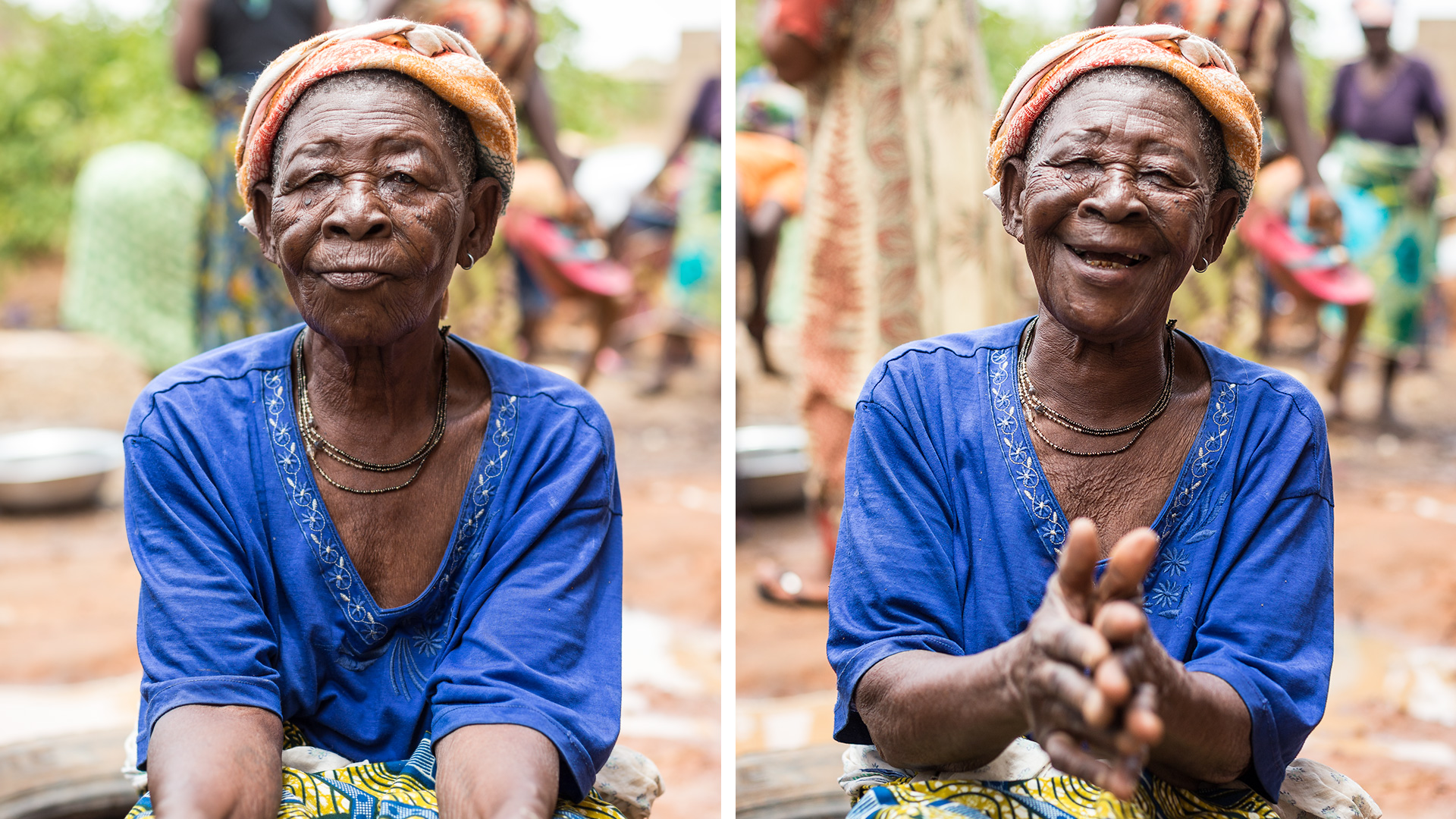
Photos by William Haun.
If I shared the one on the left, I could send the message that this woman is sad and tired of a hard life. However, the image on the right shows joy as she appears ready to burst into song or laughter (which she was!).
Which image is most honest about the moment and the subject’s personality? Which is more uplifting to the subject? The one on the right; that is the one I chose to share.
In 2016, an article my wife wrote about courtyard poundings was published in the On Mission magazine. The story was accompanied by the above (right) portrait. A woman in Oregon picked up the magazine in her church foyer. In 2018, she came to Ghana on a mission trip and brought it with her.
A Ghanaian in the city where they were working thumbed through the magazine and recognized the woman in the photo as her aunt. Together, they traveled three hours to find the aunt I had photographed, and they showed her the magazine. The woman from Oregon reported that the old lady was thrilled with the photo and photographed her proudly showing off the magazine spread.
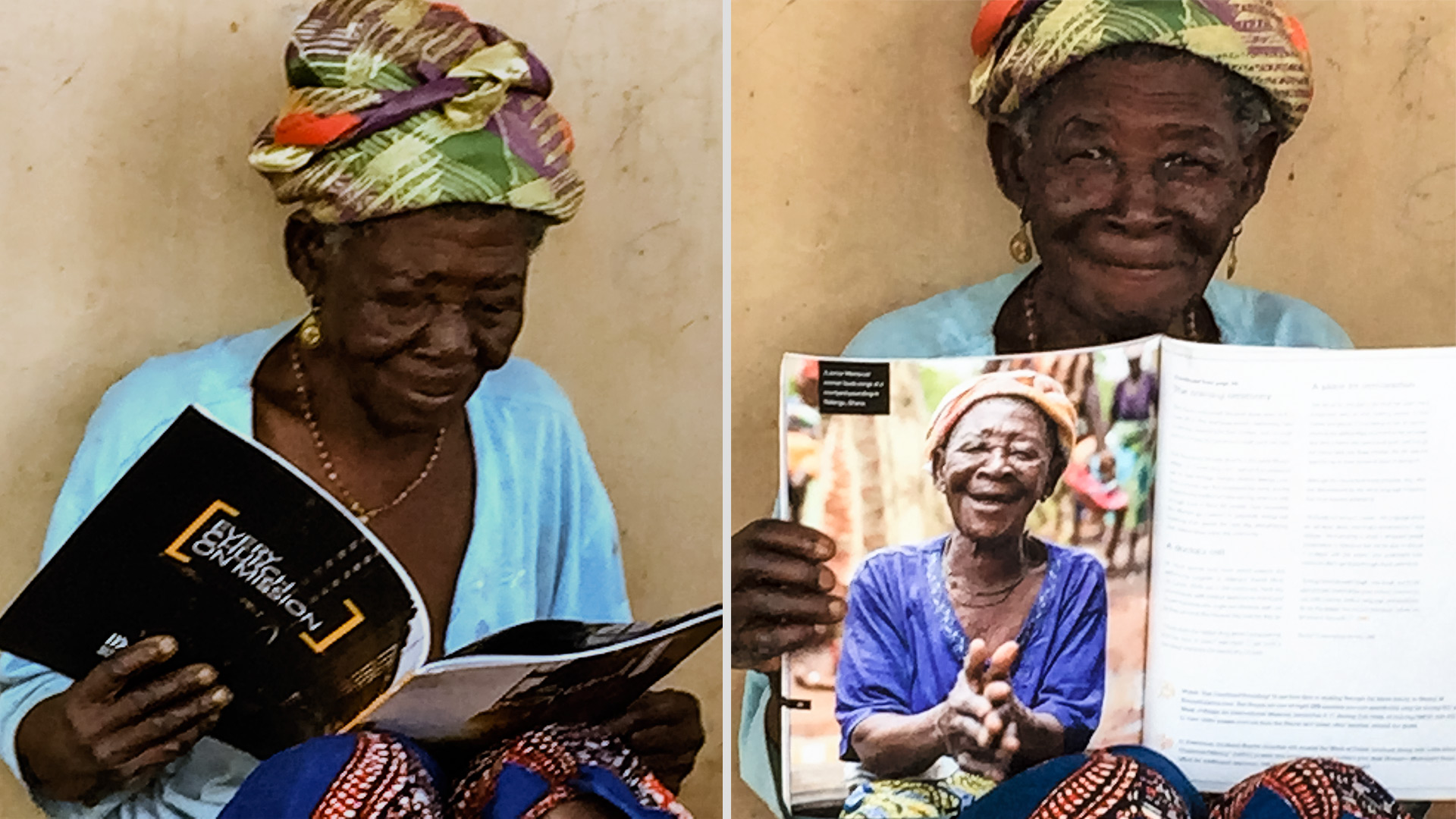
Auntie Tani with the On Mission Magazine in which her portrait was featured. Photo courtesy of Gary Taylor, Hope for Yendi.
When I heard about the story, I was so glad I used the portrait on the right. It represented her honestly and with dignity and gave her something to celebrate. The image also, in an indirect way, supported the ministry efforts of that mission team from Oregon as it helped them positively connect and build relationships with the people they were serving.
Things to Consider before You Click
The next time you go on a mission trip and are snapping away with your camera or smartphone, think about these things before you share the images online or—even better—before you take the photo at all.
- Is this photograph an honest representation of the person, place, and moment?
- Have I taken the time to get the whole story and context of the moment?
- Is the image and its caption truthful?
- Am I leaving out important details in order to push my agenda?
- Am I sharing this for my own glory or to uplift the one in the image?
- If that were me in the image, would I want it published for the world to see?
- When—not if—the subject sees the photo online, what would I say to him or her?
William Haun lives in northern Ghana in the heart of the ancient Mamprusi kingdom with his wife and their two children. He’s known locally as the “Sulimiinsina’akyinnaaba” or “young white men’s chief.” He loves learning Mamprusi proverbs, history, and folk tales, and using those to communicate his faith effectively.

